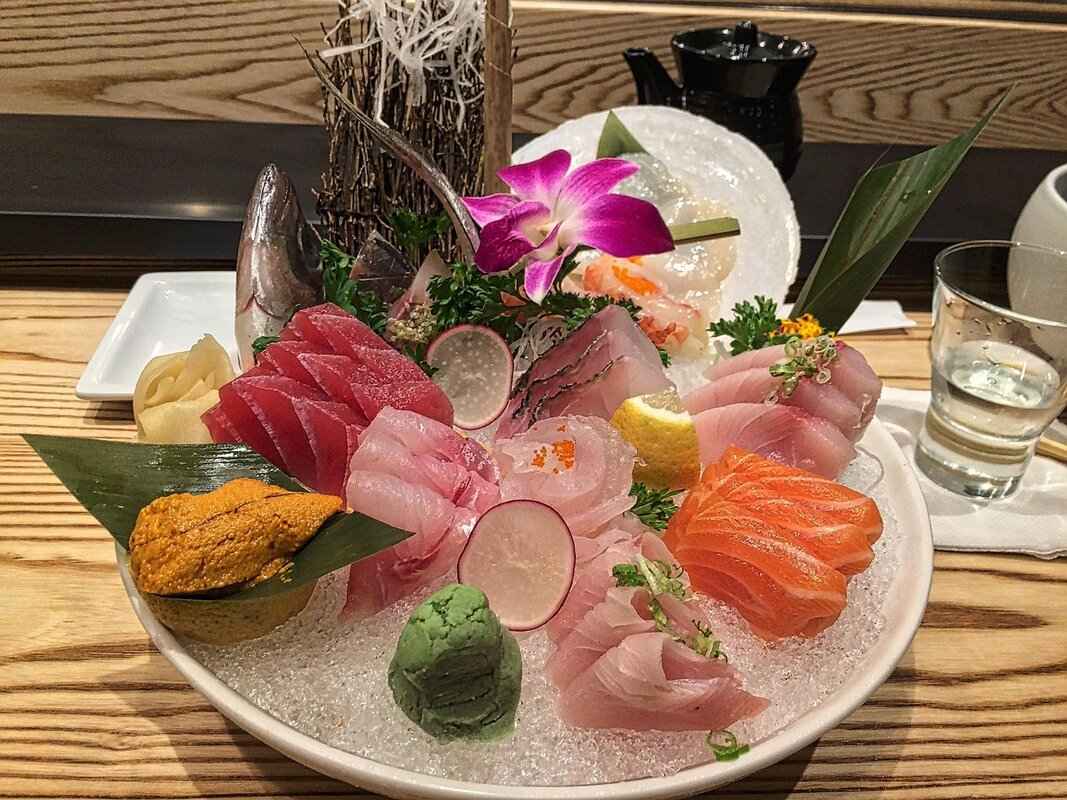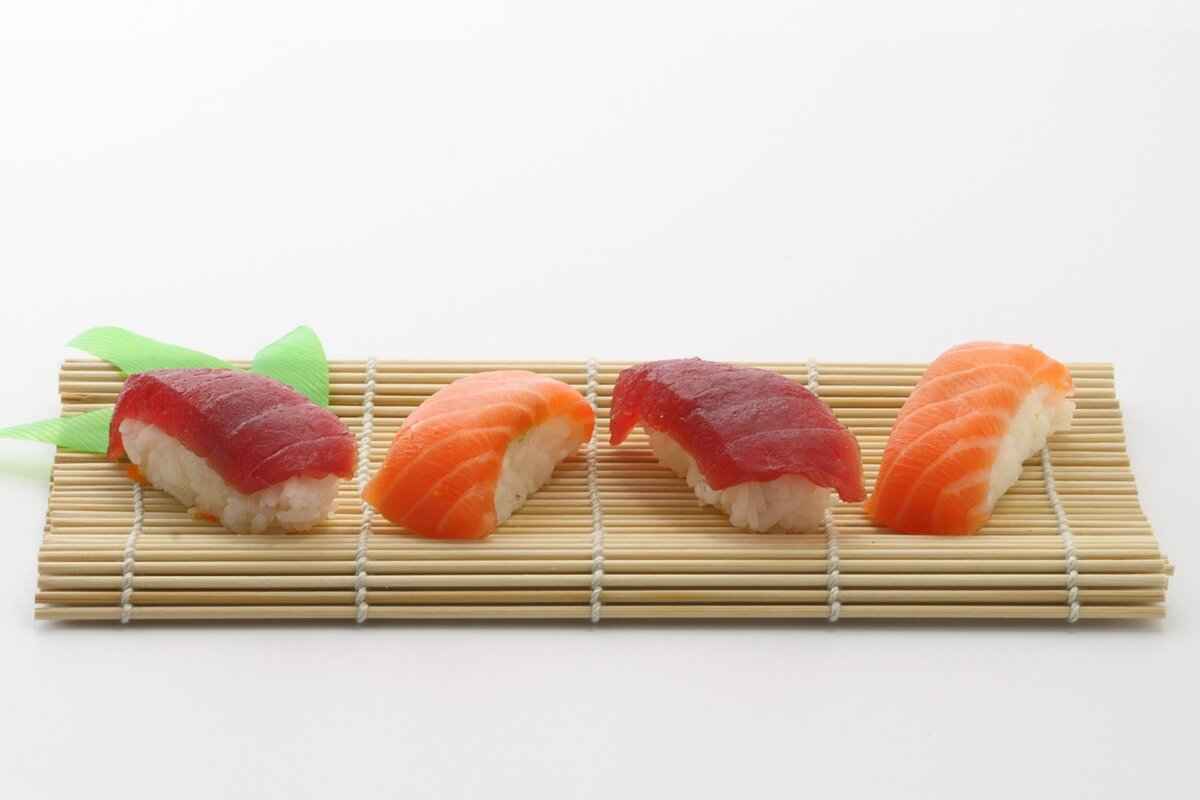This article explores the evolution of sashimi, highlighting innovative global flavors that are transforming this traditional Japanese dish into a contemporary culinary experience. Sashimi, which traditionally consists of thinly sliced raw fish or meat, is experiencing a renaissance as chefs worldwide experiment with new ingredients and techniques. This fusion of cultures is not only enhancing the flavor profiles but also broadening the appeal of this iconic dish.
What is Sashimi and Its Traditional Roots?
Sashimi is a quintessential part of Japanese cuisine, celebrated for its simplicity and emphasis on quality ingredients. Traditionally, it is served with soy sauce and wasabi, allowing the natural flavors of the fish to shine. Understanding the rich history of sashimi provides a deeper appreciation for the innovative twists that chefs are now incorporating into this classic dish.
How Are Global Influences Shaping Sashimi?
As culinary boundaries blur, global influences are increasingly evident in traditional dishes like sashimi. Chefs are blending local flavors with classic Japanese techniques, creating a unique dining experience that appeals to diverse palates. This evolution reflects a growing trend in the culinary world where traditional and modern cuisines coexist harmoniously.
Fusion Ingredients: What’s Being Added to Sashimi?
- Tropical Fruits: Ingredients like mango and pineapple add a refreshing sweetness that complements the savory notes of sashimi.
- Spices and Sauces: Chefs are experimenting with chili oil, yuzu, and even miso vinaigrette, enhancing the flavor complexity of sashimi.
Fruits and Vegetables: A Fresh Twist
Incorporating colorful fruits and vegetables not only enhances flavor but also adds visual appeal. Avocado, for instance, lends a creamy texture that balances the fish’s richness, while vibrant garnishes like radish or microgreens elevate the dish’s presentation.
Spices and Sauces: Enhancing Flavor Profiles
Innovative chefs are not afraid to push boundaries. By using unique spices and sauces, they are creating bold flavor combinations that surprise and delight diners. The use of miso, for example, introduces umami notes that elevate the overall tasting experience.
Regional Variations: How Are Different Cultures Adapting Sashimi?
Different cultures are putting their own spin on sashimi, blending local ingredients and cooking styles to create regional adaptations. For instance, in Peru, the concept of ceviche shares similarities with sashimi but incorporates citrus marinades, reflecting local culinary traditions.
What Role Does Presentation Play in Modern Sashimi?
In today’s culinary landscape, presentation is paramount. Chefs are focusing on the aesthetics of sashimi, using artistic plating techniques that transform each dish into a visual masterpiece. The way sashimi is presented can significantly enhance the dining experience, making it as much about the eyes as it is about the palate.
Plating Techniques: How Are Chefs Innovating Presentation?
Innovative plating techniques involve using unique serving dishes, garnishes, and artistic arrangements. Chefs might serve sashimi on slate tiles or in bowls filled with ice, creating a stunning visual effect that entices diners even before they take a bite.
Color and Texture: Why Are They Important?
The interplay of color and texture is crucial in sashimi. A well-composed dish not only captivates the eyes but also engages the palate, offering a variety of sensations that make the dining experience memorable.
What Are the Health Benefits of Sashimi?
Sashimi is not just a culinary delight; it also offers numerous health benefits. Rich in omega-3 fatty acids, it supports heart health while being low in calories, making it an excellent choice for health-conscious diners.
Nutritional Value: What Makes Sashimi Healthy?
High-quality protein and essential nutrients make sashimi a nutritious option. Regular consumption of raw fish can enhance brain function and overall well-being, contributing to a balanced diet.
How to Enjoy Sashimi Responsibly?
To enjoy sashimi responsibly, it is crucial to source fish from sustainable fisheries and ensure proper handling and storage. This approach not only promotes environmental health but also guarantees food safety for consumers.

What is Sashimi and Its Traditional Roots?
Sashimi is more than just a dish; it is an integral part of Japanese culinary culture. This traditional delicacy consists of thinly sliced raw fish or meat, typically served with soy sauce and wasabi. The roots of sashimi can be traced back to ancient Japan, where it was originally created as a method of preserving fish. Over time, it evolved into a refined dish that emphasizes the quality and freshness of the ingredients used.
What sets sashimi apart from other dishes is its simplicity and focus on the natural flavors of the ingredients. Unlike sushi, which typically includes rice, sashimi is all about the fish or meat itself. The preparation involves careful selection and handling of the ingredients, highlighting the skill and artistry of the chef.
The evolution of sashimi reflects broader changes in Japanese cuisine and culture. Initially, sashimi was a practical solution for preserving fish, but it gradually transformed into a sophisticated dish served in fine dining establishments. Today, it is enjoyed worldwide, appreciated for its aesthetic presentation and delicate flavors.
- Maguro (Tuna): Known for its rich flavor and meaty texture.
- Sake (Salmon): Popular for its buttery consistency and vibrant color.
- Hamachi (Yellowtail): Celebrated for its sweet taste and tender flesh.
- Ikura (Salmon Roe): Adds a burst of flavor and a unique texture.
The freshness of the fish is paramount in sashimi preparation. Chefs often source their ingredients from local markets or trusted suppliers to ensure that only the best quality fish is used. The flavor and texture of sashimi can significantly change based on how fresh the fish is, making it essential for a delightful dining experience.
As culinary boundaries blur, sashimi has begun to incorporate global flavors and ingredients. Chefs worldwide are experimenting with fusion cuisine, introducing elements such as tropical fruits, spices, and unique sauces into traditional sashimi. This innovation not only broadens the appeal of sashimi but also showcases the versatility of this beloved dish.
- Mango: Adds a sweet, tropical flavor that complements the fish.
- Avocado: Provides creaminess and a rich texture.
- Chili Oil: Introduces a spicy kick that enhances the dish.
- Miso Vinaigrette: Offers a tangy and umami-rich dressing.
In modern dining, presentation plays a crucial role in the overall experience of sashimi. Chefs utilize artistic plating techniques, incorporating vibrant garnishes and unique serving dishes to create visually stunning presentations. The aesthetic appeal not only captivates diners but also elevates the enjoyment of the dish.
Aside from its exquisite taste, sashimi is a nutritious option. Rich in omega-3 fatty acids, it supports heart health and brain function. Additionally, sashimi is low in calories, making it a popular choice among health-conscious diners.
When indulging in sashimi, it is vital to source fish from sustainable fisheries. Proper handling and storage are also crucial to ensure food safety. By making responsible choices, diners can enjoy sashimi while promoting environmental health.

How Are Global Influences Shaping Sashimi?
Sashimi, a cornerstone of Japanese cuisine, has long been celebrated for its simplicity and purity. However, as culinary boundaries blur in our increasingly interconnected world, this traditional dish is undergoing a remarkable transformation. Global influences are reshaping sashimi, leading to innovative interpretations that appeal to a broader audience.
Fusion Ingredients: What’s Being Added to Sashimi?
Chefs around the globe are experimenting with a variety of fusion ingredients to reinvent sashimi. The incorporation of tropical fruits such as mango, pineapple, and even kiwi introduces a sweet and tangy contrast to the rich umami flavors of the fish. These additions not only enhance taste but also create visually stunning presentations that captivate diners.
Additionally, spices and sauces are playing a pivotal role in this evolution. Ingredients like chili oil, miso vinaigrette, and even citrus-infused dressings are being used to elevate the traditional flavor profile of sashimi. This blend of flavors offers a bold and exciting culinary experience that challenges conventional norms.
Fruits and Vegetables: A Fresh Twist
The addition of fresh fruits and vegetables brings a vibrant twist to sashimi. For example, the creamy texture of avocado pairs beautifully with the delicate flavors of raw fish, creating a harmonious balance. Similarly, the incorporation of microgreens and edible flowers not only enhances flavor but also adds a touch of elegance to the dish.
Spices and Sauces: Enhancing Flavor Profiles
Innovative chefs are also utilizing global spices to enhance the traditional taste of sashimi. Ingredients like wasabi are being complemented with smoky paprika or curry powder, providing a unique twist that excites the palate. These creative combinations encourage diners to explore new flavor dimensions, making sashimi a more adventurous choice.
Regional Variations: How Are Different Cultures Adapting Sashimi?
As sashimi garners global popularity, various cultures are infusing their culinary heritage into this traditional dish. In Latin America, for instance, chefs are embracing the concept of ceviche, where fresh fish is marinated in citrus juices, offering a refreshing take on sashimi. This adaptation highlights how local ingredients can transform a classic dish into something uniquely regional.
In Mediterranean cuisine, the use of olive oil and fresh herbs creates a different flavor profile that resonates with local tastes. This cross-cultural exchange not only enriches sashimi but also fosters a deeper appreciation for diverse culinary traditions.
What Role Does Presentation Play in Modern Sashimi?
In the realm of modern gastronomy, presentation is paramount. Chefs are embracing artistic plating techniques that transform sashimi into a visual masterpiece. The use of unique serving dishes, garnishes, and creative arrangements elevates the dining experience, enticing diners before they even take their first bite.
Plating Techniques: How Are Chefs Innovating Presentation?
Innovative plating techniques involve layering sashimi with complementary ingredients and using contrasting colors to create a stunning visual impact. For instance, a vibrant sashimi platter might feature thinly sliced fish arranged in a fan shape, garnished with edible flowers and microgreens, making it not just a meal but a work of art.
Color and Texture: Why Are They Important?
The interplay of color and texture is crucial in sashimi presentation. A well-composed dish engages the senses, making it memorable and enjoyable. The contrast between the smoothness of the fish and the crunchiness of added vegetables or garnishes enhances the overall sensory experience, inviting diners to savor each bite.
What Are the Health Benefits of Sashimi?
Beyond its culinary appeal, sashimi is also a nutritious option. Rich in omega-3 fatty acids and low in calories, it provides numerous health benefits. The high-quality protein and essential nutrients found in raw fish contribute to improved heart health and brain function, making sashimi an excellent choice for health-conscious diners.
Nutritional Value: What Makes Sashimi Healthy?
Sashimi is not only a delicious dish but also a source of vital nutrients. It is packed with protein, which is essential for muscle repair and growth, and contains essential vitamins and minerals. The benefits of consuming raw fish are well-documented, promoting overall well-being and vitality.
How to Enjoy Sashimi Responsibly?
To enjoy sashimi responsibly, it’s crucial to source fish from sustainable fisheries and ensure proper handling and storage. This practice not only promotes environmental health but also guarantees food safety for consumers. Awareness and education about sustainable seafood choices are essential in preserving the ocean’s ecosystems while enjoying this exquisite dish.
Fusion Ingredients: What’s Being Added to Sashimi?
In the ever-evolving world of culinary arts, chefs are pushing the boundaries of traditional dishes, and sashimi is no exception. This classic Japanese dish, known for its simplicity and purity, is being transformed through the incorporation of global flavors and innovative ingredients. The fusion of tropical fruits, spices, and unique sauces is making sashimi more appealing to adventurous eaters and culinary enthusiasts alike.
Innovative Combinations: What Fruits Are Being Used?
One of the most exciting trends in sashimi is the addition of fresh fruits. Mango, with its sweet and juicy profile, pairs beautifully with the delicate flavor of fish, creating a refreshing contrast. Similarly, avocado adds a creamy texture that complements the sashimi’s richness. Other fruits like pineapple and kiwi are also making their way onto sashimi plates, providing not only flavor but also a vibrant visual appeal that captivates diners.
Spices and Sauces: What Enhancements Are Being Explored?
The use of spices and sauces in sashimi is another area where chefs are getting creative. Traditional soy sauce is being replaced or enhanced with chili oil for a spicy kick or miso vinaigrette for a tangy depth of flavor. These additions not only elevate the dish but also cater to diverse palates, allowing for a more personalized dining experience. Chefs are also experimenting with herbs like cilantro and mint, which bring a fresh, aromatic quality to the dish.
How Are Chefs Blending Techniques from Other Cuisines?
Beyond just ingredients, the techniques used to prepare sashimi are also evolving. Influences from Latin American cuisines, such as the use of ceviche methods, are being integrated into sashimi preparation. This involves marinating fish in citrus juices, which not only enhances flavor but also alters the texture of the fish, making it tender and succulent. Such fusion techniques create a unique dining experience that pays homage to both Japanese and Latin culinary traditions.
Presentation: How Does It Impact the Sashimi Experience?
In modern gastronomy, presentation plays a crucial role in the overall dining experience. Chefs are focusing on artistic plating techniques that highlight the vibrant colors and textures of the ingredients. Sashimi is often served on unique dishes, accompanied by edible flowers or microgreens, which not only enhance visual appeal but also provide additional flavors. This attention to detail makes each dish a feast for the eyes, enticing diners even before they take their first bite.
What Are the Benefits of These Fusion Ingredients?
Incorporating fusion ingredients into sashimi not only enhances the flavor but also offers a variety of health benefits. Many of the fruits and vegetables used are rich in vitamins, antioxidants, and healthy fats. For example, avocado provides heart-healthy monounsaturated fats, while tropical fruits are packed with vitamins and minerals. This makes sashimi not just a delicious option, but also a nutritious one, appealing to health-conscious diners.
As the culinary landscape continues to evolve, the fusion of global flavors into traditional dishes like sashimi reflects a broader trend towards innovation and creativity in the kitchen. The result is a dish that honors its roots while inviting new interpretations, ensuring that sashimi remains a beloved choice for both traditionalists and modern food enthusiasts.
Fruits and Vegetables: A Fresh Twist
As culinary creativity continues to flourish, traditional dishes like sashimi are undergoing fascinating transformations. One of the most exciting trends in modern sashimi preparation is the incorporation of fruits and vegetables, which not only enhance flavor but also contribute to a visually stunning presentation. This evolution reflects a broader movement towards fusion cuisine, where diverse ingredients come together to create innovative dining experiences.
Integrating fruits such as mango and avocado into sashimi dishes introduces a refreshing contrast to the inherent richness of the fish. The sweetness of mango, for instance, complements the savory umami notes of tuna or salmon, creating a delightful balance that excites the palate. Meanwhile, the creamy texture of avocado adds a luxurious mouthfeel, enhancing the overall dining experience.
Moreover, these fruits not only elevate the flavor profile but also contribute to a vibrant and colorful presentation. A well-constructed sashimi plate can resemble an artist’s palette, with bright yellows, greens, and pinks that captivate diners even before they take their first bite. This emphasis on aesthetics aligns perfectly with the modern dining trend that values both taste and visual appeal.
- Mango: Its tropical sweetness and juicy texture make it an ideal pairing for various types of fish, offering a refreshing contrast.
- Avocado: Known for its creamy consistency, avocado enriches the dish while providing healthy fats that complement the lean protein of sashimi.
- Cucumber: Adding crunch and a refreshing flavor, cucumber slices can provide a crisp texture that enhances the overall experience.
- Radish: With its peppery bite, radish adds an interesting flavor dimension, balancing the delicate taste of the fish.
Chefs are not limited to just these fruits and vegetables; they are exploring a wide range of options to create unique combinations. For instance, incorporating citrus fruits like yuzu or grapefruit can add an acidic brightness that cuts through the richness of fatty fish. Additionally, using herbs such as cilantro or mint can introduce aromatic elements that enhance the overall sensory experience.
Furthermore, the addition of vegetables like microgreens or edible flowers not only boosts the visual appeal but also adds layers of flavor that can surprise and delight diners. This trend towards incorporating fresh produce into sashimi reflects a growing awareness of the importance of seasonality and local sourcing in modern cuisine.
The health benefits of adding fruits and vegetables to sashimi are also noteworthy. Many of these ingredients are rich in vitamins, antioxidants, and fiber, making sashimi not just a delicious choice but also a nutritious one. This aligns with the increasing consumer demand for healthier dining options.
In conclusion, the fusion of fruits and vegetables into sashimi represents a significant shift in how this traditional dish is perceived and enjoyed. By embracing these fresh ingredients, chefs are creating innovative and exciting culinary experiences that appeal to a diverse range of palates. As diners seek out unique flavors and vibrant presentations, the future of sashimi looks brighter than ever.
Spices and Sauces: Enhancing Flavor Profiles
Sashimi, a cherished staple of Japanese cuisine, is undergoing a remarkable transformation as chefs worldwide embrace a variety of unique spices and sauces. These innovative additions not only enhance the traditional flavors but also create a bold and exciting culinary experience that appeals to a modern palate. From chili oil to miso vinaigrette, the fusion of global flavors is revolutionizing how we perceive and enjoy this classic dish.
As culinary boundaries blur, chefs are increasingly seeking inspiration from international cuisines. The incorporation of spices and sauces from various cultures allows for a creative reinterpretation of sashimi, making it more accessible and appealing to a broader audience. For instance, chili oil adds a spicy kick that contrasts beautifully with the delicate texture of raw fish, while miso vinaigrette offers a rich umami flavor that enhances the overall taste profile.
- Chili Oil: This oil, infused with spices, provides a fiery element that can elevate the flavor of sashimi.
- Miso Vinaigrette: A tangy and savory dressing that complements the freshness of the fish.
- Yuzu Kosho: A citrusy paste made from yuzu fruit and chili peppers that adds a zesty kick.
- Sesame Oil: A nutty oil that enhances the richness of sashimi while adding depth to its flavor.
- Wasabi Variations: Innovative takes on traditional wasabi, such as wasabi aioli, provide a creamy texture and a modern twist.
The use of spices and sauces in sashimi not only enhances flavor but also transforms the overall dining experience. By introducing bold flavors, chefs can create a more exciting and memorable meal. For example, a drizzle of chili oil can awaken the taste buds, while a miso vinaigrette can bring a refreshing contrast to the dish. This interplay of flavors encourages diners to explore new sensations and appreciate the artistry behind each plate.
Incorporating spices and sauces into sashimi can also provide health benefits. Many spices, such as chili, have anti-inflammatory properties, while ingredients like sesame oil are rich in healthy fats. Additionally, the use of fresh, flavorful sauces can reduce the need for excessive sodium, making sashimi a healthier option compared to other dishes.
For those looking to recreate this innovative approach to sashimi at home, experimenting with different spices and sauces is key. Start with high-quality, fresh fish and consider pairing it with various sauces to discover your favorite combinations. Chili oil can be drizzled over tuna, while miso vinaigrette can complement salmon beautifully. The possibilities are endless!
In conclusion, the evolution of sashimi through the use of unique spices and sauces is a testament to the dynamic nature of culinary traditions. By embracing these global flavors, chefs are not only enhancing the taste of sashimi but also inviting diners to embark on a flavorful journey that celebrates both tradition and innovation.
Regional Variations: How Are Different Cultures Adapting Sashimi?
Sashimi, a dish that epitomizes the essence of Japanese cuisine, is undergoing a remarkable transformation as it travels across the globe. Different cultures are putting their unique spin on this traditional delicacy, blending local ingredients and cooking styles to create regional variations that reflect their culinary heritage. This evolution not only showcases the versatility of sashimi but also highlights the global appreciation for this artful presentation of raw fish.
How Are Local Ingredients Influencing Sashimi?
As chefs experiment with sashimi, they are increasingly incorporating local ingredients that resonate with their culinary traditions. For instance, in Hawaii, the traditional poke bowl has emerged, featuring diced raw fish marinated in soy sauce and sesame oil, often accompanied by local fruits like pineapple and avocado. This adaptation not only honors the original dish but also introduces a tropical flair that enhances flavor and texture.
What Unique Techniques Are Being Employed?
In regions like Mexico, chefs are merging sashimi with local culinary techniques, such as using citrus marinades to create a ceviche-inspired version. This approach not only adds a zesty twist but also emphasizes freshness, a key characteristic of both sashimi and ceviche. Furthermore, the use of traditional Mexican spices can elevate the taste profile, creating a fusion that appeals to adventurous eaters.
How Are Cultural Influences Shaping Flavor Profiles?
Incorporating cultural influences into sashimi has led to the creation of dishes that tell a story of their origins. For example, in South Korea, chefs often serve sashimi alongside kimchi or spicy sauces, enhancing the dish’s flavor with a kick of heat. This adaptation not only respects the traditional roots of sashimi but also embraces the bold flavors that are a hallmark of Korean cuisine.
What Are Some Notable Examples of Sashimi Adaptations?
- Peruvian Nikkei Cuisine: This fusion blends Japanese sashimi techniques with Peruvian ingredients, often featuring aji amarillo sauce and sweet potatoes.
- Italian Influences: In Italy, sashimi may be served with olive oil and balsamic vinegar, offering a Mediterranean twist that highlights the freshness of the fish.
- Indian Spices: Indian chefs are introducing spices like coriander and cumin to sashimi, creating a unique flavor experience that pays homage to their culinary heritage.
How Are Chefs Innovating Presentation?
Beyond flavor, the presentation of sashimi is also evolving. Chefs are adopting artistic plating techniques that enhance the visual appeal of the dish. In many cultures, the use of vibrant colors and textures is crucial. For example, incorporating edible flowers or microgreens not only beautifies the dish but also adds a layer of flavor that complements the fish.
Why Is the Global Adaptation of Sashimi Important?
The global adaptation of sashimi signifies a broader culinary trend where traditional dishes are reimagined through the lens of local culture. This not only fosters appreciation for diverse cuisines but also encourages culinary innovation. As chefs around the world explore the possibilities of sashimi, they invite diners to experience a dish that transcends its origins, making it a true global culinary icon.

What Role Does Presentation Play in Modern Sashimi?
In the culinary world, presentation is not merely an afterthought; it is a fundamental aspect that can significantly influence a diner’s experience. This is especially true for sashimi, where the aesthetics of the dish can enhance its appeal and elevate the overall dining experience. Chefs today are not only focused on the quality of ingredients but also on how they present their dishes. The artistry involved in plating sashimi transforms it into a visual feast, making it an integral part of modern dining.
Why Is Aesthetic Presentation Important?
The visual appeal of food can stimulate appetite and anticipation. When diners are presented with a beautifully arranged plate of sashimi, their expectations are heightened, leading to a more enjoyable meal. The combination of colors, shapes, and textures creates a sensory experience that begins before the first bite is taken. A well-plated sashimi dish invites diners to engage with their food, making the meal feel more special and memorable.
Innovative Plating Techniques: What Are Chefs Doing?
- Unique Serving Dishes: Chefs are experimenting with various types of plates, bowls, and even slate or wooden boards to serve sashimi. The choice of dish can dramatically affect the presentation, allowing for creative arrangements that highlight the freshness and quality of the fish.
- Artistic Arrangements: The way sashimi is arranged on the plate can range from minimalist to elaborate. Chefs often use techniques such as stacking, layering, or fanning the slices to create visual interest. The arrangement can also reflect the type of fish being served, enhancing the overall theme of the dish.
- Garnishes and Accompaniments: Thoughtfully chosen garnishes, such as edible flowers, microgreens, or citrus slices, can add color and texture to the plate. These elements not only enhance the visual appeal but can also complement the flavors of the sashimi, creating a harmonious dining experience.
Color and Texture: How Do They Enhance the Experience?
The interplay of color and texture is crucial in sashimi presentation. A vibrant array of fish, from deep reds to pale pinks and whites, can create a striking visual contrast. Additionally, the textures of different fish types, whether silky or firm, contribute to the overall sensory experience. Chefs often aim to balance these elements, ensuring that each component of the dish is visually appealing and texturally interesting.
How Does Presentation Affect Perception of Flavor?
Research has shown that the way food is presented can influence our perception of its taste. When sashimi is plated beautifully, diners are more likely to perceive it as fresher and more flavorful. This psychological effect can enhance the overall enjoyment of the dish, making it essential for chefs to invest time and creativity into their plating techniques.
Conclusion
In the realm of modern sashimi, presentation plays a pivotal role in shaping the dining experience. By focusing on aesthetics, chefs are not only enhancing the visual appeal of their dishes but also influencing how diners perceive flavor and quality. As sashimi continues to evolve, the importance of artistic presentation will remain a key factor in its transformation, ensuring that each dish is a feast for both the eyes and the palate.
Plating Techniques: How Are Chefs Innovating Presentation?
In the world of culinary arts, presentation is as crucial as flavor, especially when it comes to sashimi. Plating techniques have evolved dramatically, allowing chefs to showcase their creativity while enhancing the dining experience. By utilizing innovative serving dishes, unique garnishes, and artistic arrangements, chefs are turning sashimi into a visual masterpiece that entices diners before they even take a bite.
When it comes to plating sashimi, several key elements come into play:
- Color: A vibrant color palette is essential for capturing the eye. Chefs often incorporate colorful garnishes, such as edible flowers or microgreens, to add visual interest.
- Texture: Combining different textures can elevate the dish. For instance, pairing silky sashimi with crunchy elements like toasted sesame seeds or crispy vegetables creates a delightful contrast.
- Arrangement: The way sashimi is arranged on the plate can significantly impact its appeal. Creative layouts, such as fan shapes or stacked presentations, can make the dish more dynamic.
Gone are the days of standard white plates. Today, chefs are experimenting with various serving vessels to enhance the presentation of sashimi. Some popular choices include:
- Slate or Stone Plates: These materials provide a rustic backdrop that emphasizes the natural beauty of the fish.
- Wooden Boards: Using a wooden board can evoke a sense of authenticity, reminiscent of traditional Japanese serving styles.
- Glass Domes: For a dramatic effect, some chefs use glass domes to cover their sashimi, unveiling it at the table for a theatrical touch.
Garnishes are not merely decorative; they serve to enhance the overall flavor and experience of sashimi. Chefs are increasingly using:
- Herbs and Edible Flowers: Fresh herbs like shiso or cilantro add an aromatic element, while edible flowers introduce a pop of color.
- Citrus Zest: A sprinkle of citrus zest can brighten the dish, complementing the flavors of the fish.
- Homemade Sauces: Drizzling a unique sauce, such as a yuzu vinaigrette or a spicy mayo, can provide an extra layer of flavor and visual appeal.
The arrangement of sashimi on the plate can evoke emotions and set the tone for the meal. A well-thought-out presentation can:
- Enhance Anticipation: When diners see a beautifully plated dish, it builds excitement and anticipation for the flavors to come.
- Encourage Sharing: Artistic arrangements can make sashimi more shareable, inviting diners to experience the dish together.
- Reflect Cultural Influences: The way sashimi is plated can also reflect various cultural influences, showcasing the chef’s creativity and culinary background.
Modern plating techniques not only enhance the visual appeal of sashimi but also contribute to the overall dining experience. A well-presented dish can:
- Engage the Senses: The interplay of color, texture, and aroma creates a multi-sensory experience that captivates diners.
- Encourage Social Media Sharing: In the age of social media, visually stunning dishes are more likely to be shared, increasing a restaurant’s visibility and attracting new customers.
- Elevate Perceived Value: Innovative plating can elevate the perceived value of a dish, allowing chefs to command higher prices while providing a memorable experience.
In conclusion, the art of plating sashimi is an essential aspect of modern culinary practices. By employing innovative techniques, chefs are transforming this traditional dish into a stunning visual experience that delights the senses and enhances the overall dining journey.
Color and Texture: Why Are They Important?
The world of culinary arts is a fascinating realm where color and texture play pivotal roles, especially in dishes like sashimi. These elements not only enhance the visual appeal but also contribute significantly to the overall sensory experience. The careful interplay of these characteristics makes each sashimi dish not just a meal but a memorable experience for the palate.
Color is one of the first things that diners notice when a plate of sashimi is presented. The vibrant hues of the fish, combined with garnishes and accompanying ingredients, create a feast for the eyes. For instance, the deep reds of tuna, the soft pinks of salmon, and the bright whites of scallops can evoke a sense of freshness and quality. This visual stimulation can trigger a positive emotional response, enhancing the overall dining experience.
Texture is equally important in sashimi. The contrast between the firm, buttery texture of a well-prepared fish and the crunch of accompanying vegetables or garnishes can elevate the dish. Each bite can offer a different sensation, from the smoothness of the fish to the crispness of sliced radishes or the creamy richness of avocado. This variety keeps the palate engaged, making the meal more enjoyable.
Presentation is where color and texture converge to create an artistic display. Chefs often use unique plating techniques to highlight these elements. For instance, arranging sashimi on a bed of colorful seaweed or pairing it with bright citrus slices not only enhances the visual appeal but also sets the stage for a multi-textural experience. The careful arrangement can make the dish look more enticing, encouraging diners to explore the flavors and textures.
Modern chefs are constantly pushing the boundaries of traditional sashimi by incorporating unexpected ingredients that add both color and texture. For example, the addition of edible flowers or microgreens can introduce vibrant colors and delicate textures that complement the fish. Similarly, using flavored oils or sauces can add depth and richness, enhancing the overall sensory experience.
- Tuna with Avocado: The rich red of tuna paired with the creamy green of avocado creates a visually stunning and texturally delightful combination.
- Salmon with Radish: The soft pink of salmon contrasts beautifully with the crisp white and vibrant red of radish slices, offering a refreshing crunch.
- Scallops with Citrus: The delicate white of scallops is enhanced by the bright orange or yellow of citrus fruits, adding both color and a zesty flavor.
For diners, understanding the importance of color and texture in sashimi can enhance their appreciation of the dish. Taking a moment to observe the presentation, noting the vibrant colors and varied textures, can heighten anticipation before the first bite. Additionally, considering how these elements interact during the tasting process can lead to a deeper enjoyment of the meal.
In conclusion, the interplay of color and texture in sashimi is not merely an aesthetic choice; it is a crucial aspect of the overall sensory experience. By elevating visual appeal and enhancing the palate’s engagement, chefs are transforming sashimi into a contemporary culinary delight that is both memorable and exciting.

What Are the Health Benefits of Sashimi?
Sashimi is a culinary delight that transcends mere taste, offering a plethora of health benefits that make it a preferred choice for many health-conscious diners. This traditional Japanese dish, consisting of thinly sliced raw fish or meat, is not only a feast for the senses but also a powerhouse of nutrition.
One of the primary reasons sashimi is celebrated is its rich content of omega-3 fatty acids. These essential fats are crucial for maintaining heart health, as they help lower blood pressure and reduce triglycerides. Regular consumption of omega-3s is linked to a decreased risk of heart disease, making sashimi an excellent option for those looking to improve their cardiovascular health.
Additionally, sashimi is incredibly low in calories. For individuals monitoring their weight or aiming for a healthier lifestyle, sashimi provides a satisfying meal without the excess calories often found in cooked dishes. This makes it an ideal choice for anyone looking to indulge without compromising their dietary goals.
Sashimi is not just about omega-3s; it is also a great source of high-quality protein. Protein is essential for muscle repair and growth, making sashimi a perfect post-workout meal. Furthermore, the fish used in sashimi is packed with essential vitamins and minerals, including:
- Vitamin D – Important for bone health and immune function.
- Vitamin B12 – Crucial for nerve function and the production of DNA and red blood cells.
- Selenium – An antioxidant that helps combat oxidative stress in the body.
Beyond its nutritional profile, sashimi also promotes a mindful eating experience. The act of savoring each bite of fresh fish encourages mindfulness, which can lead to better digestion and enhanced satisfaction with meals. This practice can help individuals develop a healthier relationship with food.
While sashimi offers numerous health benefits, it is essential to consume it responsibly. Sourcing fish from sustainable fisheries not only supports environmental health but also ensures the safety of the fish being consumed. Proper handling and storage of sashimi are crucial to minimize the risk of foodborne illnesses, as raw fish can harbor parasites and bacteria if not prepared correctly.
When dining out, it’s advisable to choose reputable restaurants known for their freshness and quality of ingredients. This not only enhances the overall experience but also ensures that the sashimi is safe to eat.
In summary, sashimi is a delicious and nutritious option that provides a wealth of health benefits. Its rich omega-3 fatty acids, low-calorie content, and high-quality protein make it a standout choice for health-conscious diners. By enjoying sashimi mindfully and responsibly, one can fully appreciate its culinary and health advantages.
Nutritional Value: What Makes Sashimi Healthy?
Sashimi, a celebrated dish in Japanese cuisine, is not only a feast for the eyes but also a powerhouse of nutrition. With its thinly sliced raw fish or meat, sashimi has gained popularity worldwide, appealing to health-conscious diners and food enthusiasts alike. This article delves into the nutritional value of sashimi, highlighting what makes it a healthy choice.
Sashimi is renowned for being rich in high-quality protein, essential for muscle repair and growth. The primary ingredient, raw fish, is a source of various nutrients:
- Omega-3 Fatty Acids: Found abundantly in fish like salmon and mackerel, these healthy fats contribute to improved heart health and reduced inflammation.
- Vitamins: Sashimi is a good source of vitamins such as B12, which is crucial for energy production and neurological function.
- Minerals: Fish is rich in essential minerals like selenium and iodine, which support metabolic processes and thyroid function.
One of the standout benefits of consuming sashimi is its positive impact on heart health. The omega-3 fatty acids in fish have been linked to lower blood pressure, reduced triglycerides, and decreased risk of heart disease. Regular consumption of fish can lead to:
- Lower Cholesterol Levels: Omega-3s help improve lipid profiles, promoting healthy cholesterol levels.
- Improved Circulation: These fatty acids enhance blood flow, reducing the risk of blood clots and improving overall cardiovascular health.
Another significant benefit of sashimi is its potential to boost brain function. The omega-3 fatty acids found in fish are vital for cognitive health, supporting memory and overall brain performance. Studies suggest that:
- Reduced Cognitive Decline: Regular intake of omega-3s may help lower the risk of age-related cognitive decline and dementia.
- Enhanced Mood: Omega-3s are linked to improved mental health, potentially reducing symptoms of depression and anxiety.
Incorporating sashimi into a balanced diet can be both enjoyable and nutritious. Here are some tips for making sashimi a part of your healthy eating plan:
- Pair with Vegetables: Serve sashimi with a side of fresh vegetables or a salad to increase fiber intake.
- Choose Quality Fish: Opt for sustainably sourced fish to ensure both health benefits and environmental responsibility.
- Mind Portion Sizes: While sashimi is healthy, moderation is key. Pair it with other dishes to create a well-rounded meal.
While sashimi offers numerous health benefits, it is essential to be aware of potential risks. Consuming raw fish carries the risk of foodborne illnesses and parasites. To minimize risks:
- Source Fish from Reputable Suppliers: Ensure that the fish is fresh and has been handled properly.
- Consider Your Health Status: Individuals with compromised immune systems, pregnant women, and young children should exercise caution when consuming raw fish.
In conclusion, sashimi is a nutrient-dense dish that not only tantalizes the taste buds but also offers significant health benefits. With its rich content of omega-3 fatty acids, vitamins, and minerals, sashimi is a great addition to a healthy diet, provided it is consumed responsibly.
How to Enjoy Sashimi Responsibly?
As the popularity of sashimi continues to rise globally, it becomes increasingly important for consumers to enjoy this delicacy in a way that is both safe and sustainable. Sashimi, which consists of thinly sliced raw fish or meat, offers a unique culinary experience, but with that comes the responsibility of ensuring that the ingredients are sourced ethically and handled properly.
Why is Sustainable Sourcing Important?
When it comes to sashimi, sourcing fish from sustainable fisheries is crucial. Overfishing and unsustainable fishing practices can lead to depletion of fish populations and damage to marine ecosystems. By choosing fish that are certified by organizations such as the Marine Stewardship Council (MSC) or the Aquaculture Stewardship Council (ASC), consumers can support responsible fishing practices that prioritize the health of our oceans.
How Does Proper Handling and Storage Affect Safety?
In addition to sourcing sustainable fish, proper handling and storage are essential for food safety. Raw fish can harbor bacteria and parasites that pose health risks if not managed correctly. Here are some key practices to follow:
- Temperature Control: Always keep sashimi at 41°F (5°C) or below to prevent bacterial growth.
- Freshness: Purchase sashimi-grade fish from reputable suppliers and consume it as soon as possible to ensure maximum freshness.
- Cross-Contamination Prevention: Use separate cutting boards and utensils for raw fish to avoid cross-contamination with other foods.
What Are the Benefits of Eating Sashimi Responsibly?
By enjoying sashimi responsibly, consumers contribute to the preservation of marine life and ensure that they are consuming safe, high-quality food. The benefits of this approach include:
- Environmental Health: Supporting sustainable fisheries helps protect marine ecosystems and promotes biodiversity.
- Food Safety: Proper handling and storage reduce the risk of foodborne illnesses, ensuring a safe dining experience.
- Quality Assurance: Sourcing fish responsibly often means higher quality, fresher fish, enhancing the overall sashimi experience.
How Can Consumers Make Informed Choices?
To enjoy sashimi responsibly, consumers should educate themselves about the origins of the fish they consume. Here are some tips:
- Research Suppliers: Look for restaurants and fish markets that prioritize sustainability and have transparent sourcing practices.
- Ask Questions: Don’t hesitate to ask staff about the fish’s origin and how it was handled.
- Stay Informed: Follow sustainable seafood guides and updates from organizations dedicated to marine conservation.
In conclusion, enjoying sashimi responsibly is not just about the taste; it’s about making choices that support sustainable practices and ensure food safety. By sourcing fish from sustainable fisheries and adhering to proper handling and storage guidelines, consumers can savor this exquisite dish while also contributing to the health of our oceans and their own well-being.
Frequently Asked Questions
- What is sashimi?
Sashimi is a traditional Japanese dish that features thinly sliced raw fish or meat, often accompanied by soy sauce and wasabi. It’s all about enjoying the pure flavor of the ingredients!
- How is sashimi being reinvented?
Chefs are getting creative by incorporating global flavors and unique ingredients like tropical fruits and spices, transforming sashimi into a modern culinary experience that appeals to adventurous eaters.
- What are some popular fusion ingredients in sashimi?
Some exciting additions include mango, avocado, chili oil, and miso vinaigrette. These ingredients not only enhance the flavor but also add a vibrant visual appeal.
- Why is presentation important in modern sashimi?
Presentation plays a crucial role as it enhances the dining experience. Artistic plating and the interplay of color and texture can make sashimi not just a meal, but a visual masterpiece!
- What health benefits does sashimi offer?
Sashimi is rich in omega-3 fatty acids and high-quality protein, making it a nutritious choice. It’s low in calories and can support heart health and brain function.
- How can I enjoy sashimi responsibly?
To enjoy sashimi responsibly, always source fish from sustainable fisheries and ensure proper handling and storage. This helps promote both environmental health and food safety!














